|
Displaying items by tag: Beijing
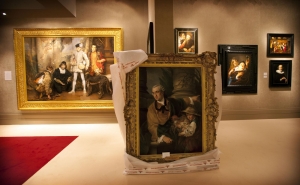
Back in March, officials in charge of the European Fine Art Fair (TEFAF) announced that they were talking with Sotheby’s about launching a high-end art and antiques fair in China. TEFAF, which takes place in Maastrich each year and is widely considered the finest art fair in the world, has just announced that TEFAF Beijing will not be taking place in 2014.
The fair was going to be a collaboration between TEFAF and Sotheby’s joint venture with China’s state-owned Beijing Gehua Cultural Development Group with Sotheby’s taking a percentage of sales from the fair. TEFAF released a statement saying that “a high-end art fair, as presently envisaged, in Beijing is not viable at the current time,” but many believe that dealers were not keen on giving a percentage of their sales to the auction house. In addition, most of TEFAF’s high-selling items such as old master paintings, antiquities, and fine antique furniture, are not in-demand among Chinese collectors.
TEFAF Maastricht will take place as planned from March 14, 2014 through March 23, 2014.
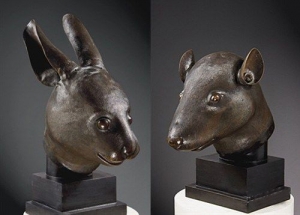
Francois-Henri Pinault, a French billionaire and CEO of the luxury-goods brand, Kering (formerly PPR), has announced that he will return a pair of Qing dynasty bronze statues to China. The looted bronzes were part of a 2009 auction at Christie’s in Paris that sparked a campaign in China aimed at putting an end to intimidation by foreign powers. Officials from Beijing have applauded Pinault’s efforts to create a more camaraderie-focused dynamic between France and China. Pinault is the owner of the Artemis Group, Christie’s holding company.
The works to be returned to China are the bronze heads of a rat and a rabbit, which were part of a group of 12 animal heads that were looted from Beijing’s Summer Palace by French and British troops in 1860 during the Second Opium War. Since emerging as a powerful international force in recent years, China has been campaigning for the return of the works. Five of the bronzes have been given back to China and one is in Taiwan while the whereabouts of the remaining four pieces remain a mystery.
The bronzes being returned to China by Pinault were previously owned by French fashion designer Yves Saint Laurent and were put up for auction in 2009 following his death. Chinese officials voiced opposition at the time of the sale and an advisor to a Chinese government fund placed the winning bid on the bronzes but never ended up paying for them. The works were returned to Pierre Berge, Saint Laurent’s former partner.
Pinault is working with the Cultural Heritage Administration to get the bronzes back to China as quickly as possible. The decision is a clever move on Pinault’s part as his businesses, which include Gucci and Puma, have been thriving in China’s growing consumer economy.
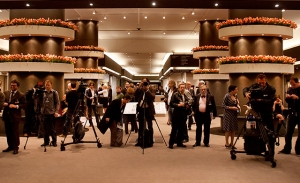
The European Fine Art Foundation, organizers of the venerable European Fine Art Fair (TEFAF), which is held annually in Maastricht, Netherlands, have been discussing launching a new art fair in China with the help of Sotheby’s. While it may seem like an unusual pairing, TEFAF and Sotheby’s are looking to join forces in order to tap into China’s thriving art and antiques market, which raised $13.7 billion in 2012.
Last year, Sotheby’s entered into a ten-year joint venture with China’s state-owned media corporation, Beijing GeHua Cultural Development Group. The collaboration will allow Sotheby’s to utilize the free port that GeHua is developing with the Tianzhu Free Trade Zone in Beijing. The port will serve as a tax-advantaged storage location, which is ideal for foreigners looking to buy high-priced artworks overseas. Sotheby’s is the first international auction house to establish itself in Mainland China.
If TEFAF and Sotheby’s decide to move forward with the fair, TEFAF Beijing will launch in 2014. TEFAF Maastricht, the world’s biggest art and antiques fair, is currently taking place in the Netherlands and will wrap up on Sunday, March 24, 2013.
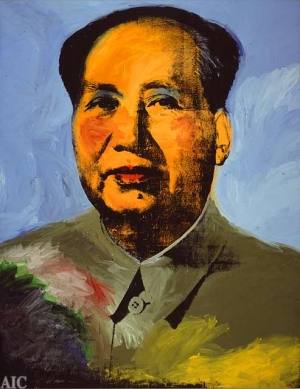
The traveling exhibition, Andy Warhol: 15 Minutes Eternal, marks the 25th anniversary of Andy Warhol’s (1928-1987) death. The tribute to the pioneering pop artist features over 300 works including paintings, photographs, screen-prints, sculptures, and films and presents Warhol’s famous Campbell’s soup cans as well as his iconic portraits of Jackie Kennedy, Elizabeth Taylor, Marilyn Monroe, and Mao Zedong.
15 Minutes Eternal, the largest traveling exhibition of Warhol’s work to date, has already been on display in Singapore and is currently on view at the Hong Kong Museum of Art through March 31, 2013. However, a few changes will have to be made before the works appear in Beijing next year as China’s Ministry of Culture has requested that the 10 Mao paintings be left out of the Beijing leg of the tour. Created in 1972 after Richard Nixon made his historic visit to China, the Mao portraits were made by applying acrylic and silkscreen-ink to canvas and went on to become some of Warhol’s best-known works.
The 26-month Asian tour has already been a success with 175,000 people visiting the exhibition in Singapore. Officials hope that the absence of the Mao paintings will not affect attendance in Beijing. The last stop on the tour is Tokyo, where the exhibition will be on view from February 1, 2014 to May 6, 2014.
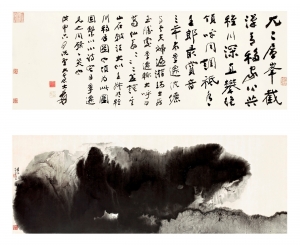
Sotheby’s hosted a number of sales in Hong Kong this past week. On October 7th, the Modern and Contemporary Southeast Asian paintings sale achieved $15.5 million, soaring past the pre-sale estimate of $5.8 million. The sale achieved the highest auction total for this category and the painting Fortune and Longevity by Lee Man Fong, an Indonesian modern master, set a record for any Southeast Asian painting when it sold for $4.4 million. The final price for the painting was almost three times the pre-sale estimate.
The Contemporary Asian Art sale totaled $15.1 million and Tiananmen No. 1 by Chinese symbolist and surrealist painter, Zhang Xiaogang, was the top lot at $2.69 million. Liu Wei’s Revolutionary Family Series – Invitation to Dinner was the second highest sale at $2.24 million, a world record price at auction for the Beijing-based artist who works in various mediums including video, installation, drawings, sculpture, and painting.
The 20th Century Chinese Art sale brought in $24.6 million and sold 90% by lot. Works from Europe, the United States, and around Asian sold well and many were above their pre-sale estimates. The top lot was Potted Chrysanthemums by the Chinese modern art pioneer, Sanyu, which sold for $3.99 million.
The following day, the Fine Chinese Paintings sale totaled $53.2 million, the highest of the four art auctions. Offering many works from private collections, the total sale was more than double the pre-sale estimate and sold 97.2% by lot. The two top lots at the auction, Zhang Daqian’s Swiss Peaks; Calligraphy in Xingshu and Fu Baoshi’s Lady at the Pavillion, both sold for $2,974,278.
Last year China beat out the United States as the world’s largest art and antiques market and the autumn sales reflect that power swap. There was a bit of controversy when a 60-year-old Taiwanese Buddhist sister demanded that a $1.65 million sale be halted at the Fine Chinese Paintings auction. Sotheby’s canceled the sale of a painting by Zhang Daqian after Lu Chieh-chien requested a court hearing to prevent bidding on Riding in the Autumn Countryside (1950) which she claims was the property of her family and had been consigned without consent.
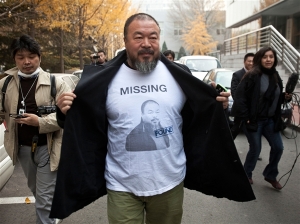
Fake Cultural Development Ltd., the design firm of dissident Chinese artist, Ai Wei Wei, will have its business license revoked by Chinese authorities. It is rumored that the district commercial affairs department will pull the license on the grounds that the company failed to re-register. The 55-year-old artist is a designer at the firm while his wife serves as the legal representative.
Ai Wei Wei has been under fire by the Chinese government since officials slammed him with a $2.4 million (15m yuan) tax evasion fine in 2011. His subsequent appeal was shut down in July and a Beijing court rejected his challenge to that decision last week. Ai claims that the firm was unable to properly renew their license because officials had confiscated the documents necessary to re-register during the tax evasion investigation.
Mr. Ai, China’s most famous contemporary artist, promises that the license fiasco will not affect his art. A critic of Communist Party rule, Ai Wei Wei caught the media’s attention when he was detained without explanation for nearly three months in 2011. Upon his release he was hit with the tax evasion claim and fine. Ai Wei Wei says an application has been submitted for a public hearing in regards to the revoked license.
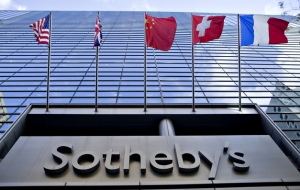
Sotheby’s has decided to get in on China’s art market boom and has signed a 10-year-joint-venture agreement to form the first international auction house in China. Until now, international auction houses have not been permitted in China outside of Hong Kong. The agreement is with Beijing GeHua Art Company, a state-owned enterprise that is part of the Beijing GeHua Cultural Development Group. Sotheby’s will be investing $1.2 million to take an 80% stake in the undertaking.
The venture, called Sotheby’s (Beijing) Auction Co. Ltd., comes at a time when Beijing is attempting to legitimize their reputation as the auction industry has recently been burdened with rampant fakes, smuggling, and non-payments.
Sotheby’s is looking to tap into China’s growing collector base and also plans to take advantage of the new Tianzhu Free Trade Zone being developed by GeHua in Beijing. The Free Trade Zone will give Sotheby’s clients access to tax-advantage storage facilities. An inaugural auction will take place at the Millennium Hall of the Beijing World Art Museum on September 27.
Last year, China overtook the United States to become the world’s largest art and antiques market so it’s no wonder that other companies are looking to get in on the action. For example, Christie’ International has licensed its trademark to Beijing-based auction house, Forever, although they do not hold sales in China itself. In addition, two of China’s biggest auction houses, China Guardian Auctions Co. Ltd. and Poly International, are looking to attract wealthy international clients. China Guardian opened a New York office this past December and plans to establish a strong presence in London as well.
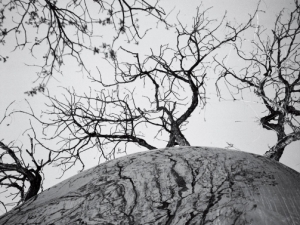
Beijing is two cities. One is of power and of money. People don’t care who their neighbors are; they don’t trust you. The other city is one of desperation. I see people on public buses, and I see their eyes, and I see they hold no hope. They can’t even imagine that they’ll be able to buy a house. They come from very poor villages where they’ve never seen electricity or toilet paper.
Every year millions come to Beijing to build its bridges, roads, and houses. Each year they build a Beijing equal to the size of the city in 1949. They are Beijing’s slaves. They squat in illegal structures, which Beijing destroys as it keeps expanding. Who owns houses? Those who belong to the government, the coal bosses, the heads of big enterprises. They come to Beijing to give gifts—and the restaurants and karaoke parlors and saunas are very rich as a result.
Beijing tells foreigners that they can understand the city, that we have the same sort of buildings: the Bird’s Nest, the CCTV tower. Officials who wear a suit and tie like you say we are the same and we can do business. But they deny us basic rights. You will see migrants’ schools closed. You will see hospitals where they give patients stitches—and when they find the patients don’t have any money, they pull the stitches out. It’s a city of violence.
The worst thing about Beijing is that you can never trust the judicial system. Without trust, you cannot identify anything; it’s like a sandstorm. You don’t see yourself as part of the city—there are no places that you relate to, that you love to go. No corner, no area touched by a certain kind of light. You have no memory of any material, texture, shape. Everything is constantly changing, according to somebody else’s will, somebody else’s power.
To properly design Beijing, you’d have to let the city have space for different interests, so that people can coexist, so that there is a full body to society. A city is a place that can offer maximum freedom. Otherwise it’s incomplete.
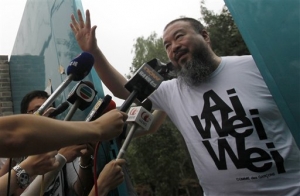
Beijing tax authorities are seeking nearly $2 million in back taxes and fines from outspoken Chinese artist Ai Weiwei, who was released last week from nearly three months in detention, his close friend said Tuesday.
Ai was released on bail last Wednesday and Chinese authorities said he confessed to tax evasion and pledged to repay the money owed. His family has denied he evaded any taxes and activists have denounced the accusation as a false premise for detaining Ai, who spoke out against the authoritarian government and its repression of civil liberties.
The Beijing Local Taxation Bureau informed Ai that he owed around 5 million yuan ($770,000) in unpaid taxes and would be fined about 7 million yuan ($1.1 million) — totaling just over 12 million yuan ($1.85 million), said Beijing human rights lawyer Liu Xiaoyuan. Liu does not legally represent Ai, but has been a friend and supporter of the artist for many years.
Chinese authorities sometimes try to silence critics by accusing them of tax violations or other nonpolitical crimes.
Ai, who has shown his work in London, New York and Berlin, has earned huge sums selling his work at auctions and through galleries. Last year, Ai filled the Turbine Hall of London's Tate Modern art gallery with millions of handmade porcelain sunflower seeds. A 100-kilogram pile of the seeds sold for more than $550,000 at a Sotheby's auction in February.
Ai's mother, Gao Ying, said two tax bureau officials delivered the notice to Ai on Monday and asked him to sign it in acknowledgement but he refused. Gao said she was unclear about the specifics in the notice, but that the alleged violations took place over the past decade.
"We don't know anything about these taxes," Gao said. "These taxes date back 10 years. Why, at that time, if they really had not paid their taxes, why did they not say anything about it every year?"
Ai declined to comment, saying the terms of his bail barred him from doing media interviews. Ai was the most high-profile target of the government's nationwide crackdown on bloggers, lawyers and activists aimed at derailing potential democratic uprisings like those sweeping through the Arab world.
Before he disappeared, Ai had been keeping an informal tally of the recent detentions on Twitter.
When he was released, the Chinese Foreign Ministry repeated allegations reported earlier by state media that a company linked to Ai, Beijing Fake Cultural Development Ltd., had evaded a "huge amount" of taxes and intentionally destroyed accounting documents.
Previously, his wife said the company, which handles business aspects of Ai's art career, belongs to her.
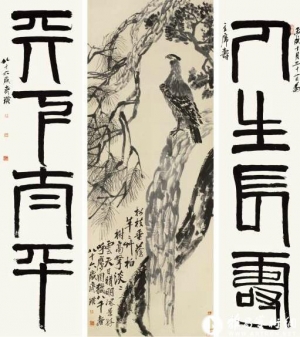
He may not be a household name in Western countries, but over the past few years the Chinese painter Qi Baishi (齐白石, 1864-1957) has quietly emerged as one of the world’s top-selling artists on the strength of his popularity among cashed-up mainland Chinese collectors. As the global financial crisis hit international auction houses in 2009, emergent Chinese collectors pumped millions into works by Qi at domestic Chinese auctions, making his ascent appear even more dramatic, and following two years of strong sales, last year Qi Baishi trailed only Pablo Picasso in ArtPrice’s annual artist sales ranking with US$70 million in sales. This saw Qi, for the first time, surpass list stalwart Andy Warhol, an achievement that was not lost on the international art press.
Now, in the wake of this weekend’s China Guardian spring auctions in Beijing, held this past weekend, Qi is back in the news. On Sunday, Qi’s 1946 ink painting “A Long Life, a Peaceful World” sold for a jaw-dropping 425.5 million yuan (US$65 million), in the process setting a new record for a Chinese painting. The 100 x 266 cm (3 x 8.5 feet) ink wash, originally created as a gift to then-Chinese leader Chiang Kai-shek, depicts a falcon on a pine branch, flanked on either side by Qi’s masterful calligraphy. The sale of this work, along with another of Qi’s paintings that sold for 92 million yuan (US$14 million) this weekend, helped the China Guardian spring auctions pull in a grand total of 1 billion yuan ($649 million) so far.
As Artinfo points out, on the strength of its ongoing spring auctions, China Guardian looks to reassert dominance in the domestic Chinese auction house over its rival Poly, which edged the former out last year with US$1.5 billion in sales last year. With the priority these auction houses place on traditional Chinese artists (though they are increasingly championing contemporary Chinese artists as well), Artinfo notes that China Guardian and Poly are hoping to tap an increasingly important market:
Over the last couple of years, as Chinese collectors have increasingly made their presence felt in auction rooms around the world, the value of works by modern masters like Qi Baishi, Xu Beihong, Zhang Daqian, and Fu Baoshi have skyrocketed. Last year these modern artists, whose work is in the traditional Chinese style, took out four of the top ten spots in Artprice’s global rankings by auction revenue.
The previous record for a Chinese painting at auction was set last year at Beijing’s Hanhai auction house, when Xu Beihong’s “Ba People Fetching Water” (1937) sold for for RMB 171 million ($25.8 million). Qi Baishi’s work now takes third place overall in the record rankings of Chinese works of art at auction. First place is held by the Qianlong vase that sold at Bainbridges in the United Kingdom for $85.9 million last November, with second place going to a calligraphy by Song Dynasty master Huang Tingjian that sold at Poly Auctions in Beijing last June for RMB 436.8 million ($64 million).
|
|
|
|
|